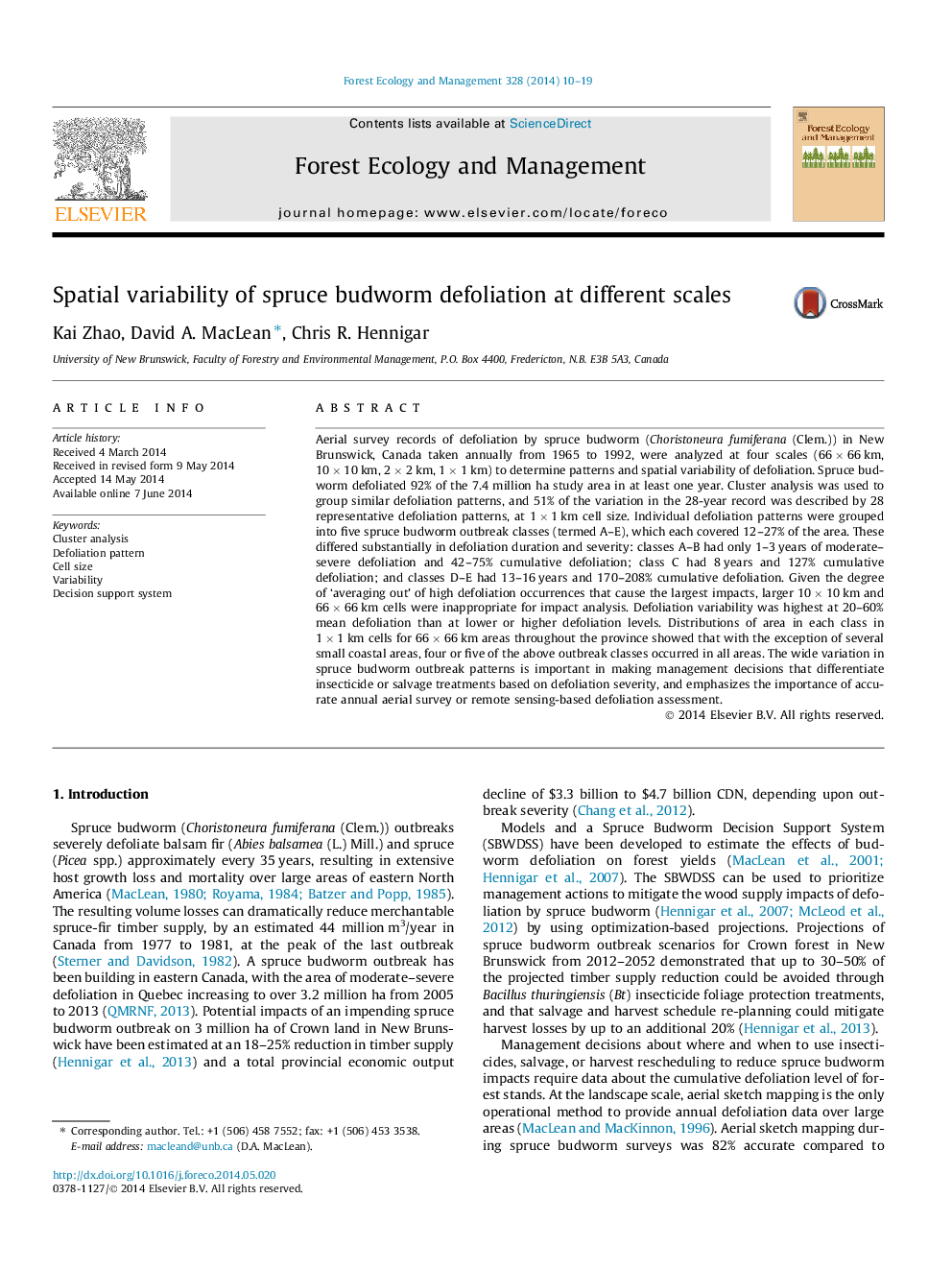| کد مقاله | کد نشریه | سال انتشار | مقاله انگلیسی | نسخه تمام متن |
|---|---|---|---|---|
| 86500 | 159194 | 2014 | 10 صفحه PDF | دانلود رایگان |
• We analyze temporal patterns and variability of budworm defoliation over 28 years.
• We aggregated 28 cluster analysis temporal patterns into five outbreak classes.
• Outbreak classes varied from 1–3 to 13–16 years of moderate–severe defoliation.
• 1 × 1 km Cells were used, as 10 or 66 km cells averaged out high defoliation patches.
• 1 km Cell defoliation distribution is appropriate input for stand model projection.
Aerial survey records of defoliation by spruce budworm (Choristoneura fumiferana (Clem.)) in New Brunswick, Canada taken annually from 1965 to 1992, were analyzed at four scales (66 × 66 km, 10 × 10 km, 2 × 2 km, 1 × 1 km) to determine patterns and spatial variability of defoliation. Spruce budworm defoliated 92% of the 7.4 million ha study area in at least one year. Cluster analysis was used to group similar defoliation patterns, and 51% of the variation in the 28-year record was described by 28 representative defoliation patterns, at 1 × 1 km cell size. Individual defoliation patterns were grouped into five spruce budworm outbreak classes (termed A–E), which each covered 12–27% of the area. These differed substantially in defoliation duration and severity: classes A–B had only 1–3 years of moderate–severe defoliation and 42–75% cumulative defoliation; class C had 8 years and 127% cumulative defoliation; and classes D–E had 13–16 years and 170–208% cumulative defoliation. Given the degree of ‘averaging out’ of high defoliation occurrences that cause the largest impacts, larger 10 × 10 km and 66 × 66 km cells were inappropriate for impact analysis. Defoliation variability was highest at 20–60% mean defoliation than at lower or higher defoliation levels. Distributions of area in each class in 1 × 1 km cells for 66 × 66 km areas throughout the province showed that with the exception of several small coastal areas, four or five of the above outbreak classes occurred in all areas. The wide variation in spruce budworm outbreak patterns is important in making management decisions that differentiate insecticide or salvage treatments based on defoliation severity, and emphasizes the importance of accurate annual aerial survey or remote sensing-based defoliation assessment.
Journal: Forest Ecology and Management - Volume 328, 15 September 2014, Pages 10–19
